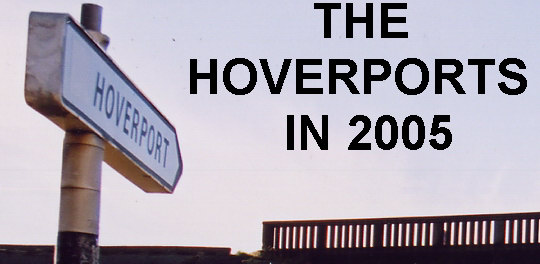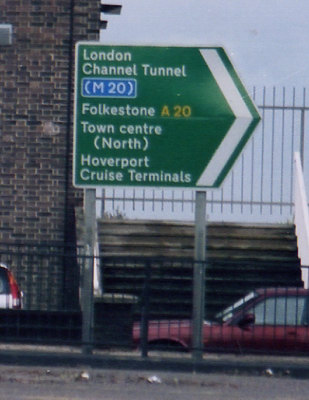| e-mail: matt@hhvferry.com |
| [HOME] [LINKS] [HENGIST] [HORSA] [VORTIGERN] [INDEX PAGES: A B C D E F G H I J K L M N O P Q R S T U V W X Y Z] |
| The termination of Hoverspeed services in November 2005 meant the end for what was, for nearly forty years, the primary (and for most of the time, the only) genuine high-speed cross-channel car ferry operation. It was also the apparent end for the hoverports at Dover and Calais which joined their equivalents at Ramsgate and Boulogne in outlasting the craft they were meant to service. All four terminal locations survive in one guise or another, none having succumbed to redevelopment either due to their by nature quite specific seafront location or, at times, just plain good fortune. Hoverports were more than just ferry-style terminals with ticket check-in desks. They borrowed more heavily from airport architecture, with duty free shops, bars and eateries. At Pegwell Bay, the hoverport's cocktail bar became a favoured venue for local residents who would drink and dance as the hovercraft buzzed in and out. The whole concept was not without paradox though these restaurants and shops were the same facilities which the same passengers could enjoy on board had they chosen the conventional ferries the early arrival required to do these before boarding eating into the hovercraft's time advantage over the classic options. Looking back on them twenty or thirty years after their construction, it would be easy to knowingly smirk at the seemingly naοve hopes the hoverports represented: how Hoverlloyd and Seaspeed thought they were changing the world, how they believed this was the future. It all seems so very dated now so very of its age. At the time however, this was the transport of the next century. And so, as yesterday's dream of the future, it takes on an added sense of tragedy: the pile of rubble at Pegwell Bay, the abandoned concrete monolith at Le Portel, these dusty monuments to a lost age of optimism when people genuinely believed they were building a better future. Like Concorde, the hovercraft gave technological advance a more public and identifiable face tangible products of Wilson's 'white heat of technology'. But the face slipped the Ramsgate hoverport was demolished in 1987, Boulogne was abandoned in 1993, the last hovercraft left Dover and Calais in 2000 and, finally, the Dover and Calais hoverports themselves were closed with the demise of Hoverspeed's SeaCats in 2005. These pages then are part ferry enthusiasm, part urban exploration and, at times, part archaeology. The hovercraft have gone; now the SeaCats have gone too. Yet in their varying levels of destruction or abandonment, the hoverports live on, silently waiting for yesterday's future to return. |
| Below: Hoverport. Landmark, directional reference point and a part of the local lexicon every bit as much as 'hovercraft' or 'SeaCat' and perhaps moreso the latter now are gone, yet the hoverport remains. |
 |
| The Cross-Channel Hoverports in 2005: Calais Dover Pegwell Bay (Ramsgate) Le Portel (Boulogne) |
 |